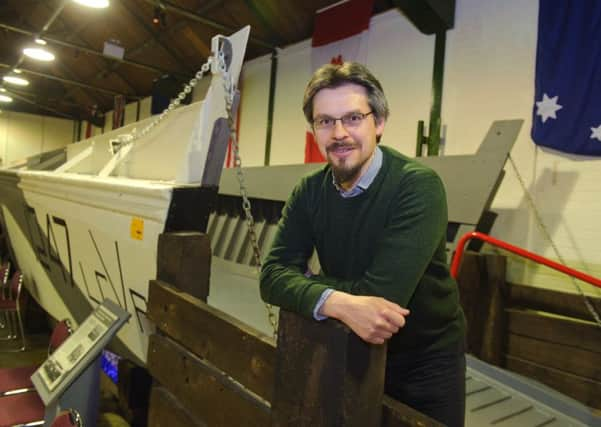Keeping history alive at the D-Day Museum


So it’s essential that the story of D-Day is shared for future generations.
Now, as we approach the 72nd anniversary of that fateful day of June 6, 1944, the D-Day Museum in Portsmouth is getting ready for its £5m refit.
Advertisement
Hide AdAdvertisement
Hide AdThe new museum will tell the story of D-Day for museum visitors in the 21st century, from a historical and personal perspective.
The museum opened to the public in 1984, so a lot of the work will be about updating and modernising the facilities available to the public.
From the build-up to the day itself and then the aftermath, the experience for visitors will be heightened as curators at the museum get ready to dive into their collections of artefacts which have built up over the years, but which may never have been seen by the thousands of people who visit each year.
Andrew Whitmarsh, development officer at the museum, says that as well as using different artefacts to tell the story, the focus will also shift to different stages of the big day.
Advertisement
Hide AdAdvertisement
Hide Ad‘A large portion covers the preparations for D-Day, which will be a significant part of the displays. But we will have more coverage of D-Day itself and more coverage of the Battle of Normandy,’ he explains.
‘D-Day is the beginning rather than the end. At the moment we aren’t telling the story as fully or as well as we could be.
‘A lot of the displays date from the 1980s and 1990s.
‘We have renewed a lot of the displays but there is a lot done in an old style.
‘Over the past few decades we have collected lots of new artefacts and history and memories from veterans. But we aren’t making the best use of it.
Advertisement
Hide AdAdvertisement
Hide Ad‘This is our chance to make use of the big collections we have made over the years, to tell the story better.
‘It’s another aspect which will be using individual people’s stories much more.
‘It’s so big that if we aren’t careful we could focus too much on the scale of it and the individuality of the people involved could get lost. They were all people with their own backgrounds and hopes and fears.
‘By using examples of real people, it could be more meaningful to visitors who don’t have their own memories of the Second World War.
Advertisement
Hide AdAdvertisement
Hide Ad‘We are aware that the number of Normandy veterans is decreasing as the years go by. So we wanted to do this project while there are still a few around who can contribute.
‘D-Day was such a huge event which still has consequences today. If things had gone differently on D-Day, the world would be a very different place.
‘That’s why it’s still relevant and why we need a museum.’
Andrew says the focus will not just be local but around the world.
‘Portsmouth played a big part in D-Day which is why the museum is here. We will be including a lot about Portsmouth in the displays.
Advertisement
Hide AdAdvertisement
Hide Ad‘But we also want to tell the story from the perspective of other countries. So it’s the story of the allied countries such as the USA and Canada. Also, we will be looking at the French civilians who were living in the areas where the fighting was taking place. They were left out of the story of D-Day. Many of them had their homes destroyed or lost their lives.
‘We want to include the perspective of the German forces as well.
‘It’s so that visitors gain an understanding of what it was like.’
There will be a lot of changes to the way the museum looks at the moment.
Advertisement
Hide AdAdvertisement
Hide AdThe order will be swapped round so visitors walk around anti-clockwise instead of clockwise, and the popular Overlord Embroidery (pictured right), one of the museum’s key features, will be at the end instead of the beginning.
The shop and the cafe will also be repositioned so that they are in the same space, making the building more open to the public.
‘It will look very different as soon as you walk in the door – and outside as well,’ Andrew says.
It’s important to show from the outside that the museum isn’t just the same as before.
‘All the displays will be completely new.
Advertisement
Hide AdAdvertisement
Hide Ad‘We want the Overlord Embroidery to be at the end so that people have the understanding of it, having seen the displays.’
As well as the story behind the events of 1944, the museum will also focus on what it was like for people returning home.
‘It will be about what it was like for the troops when they came home after the war,’ says Andrew.
‘Could they just go back to their normal life or was it difficult settling down? How did it affect people who lost relatives?
Advertisement
Hide AdAdvertisement
Hide Ad‘A lot of them joined veteran organisations. Why did they do that? Why was that important to them?
‘It’s the sort of thing that often veterans will talk about.’
The museum will be closed for over a year while the project gets underway. Closing this October, it will re-open at the end of 2017.